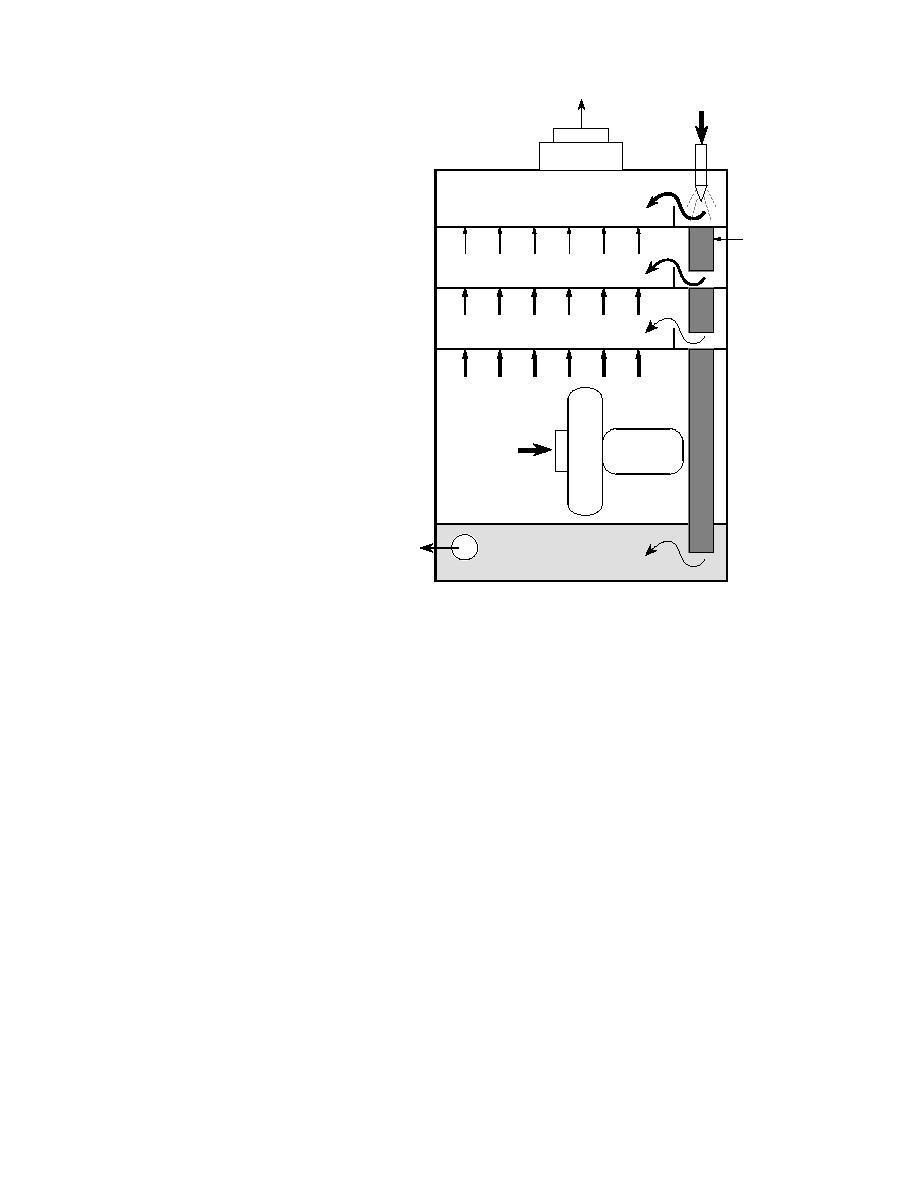
separate phase as aqueous con-
Air
Contaminated Water
taminants (API 1976). This separate
Inlet
phase frequently requires another
removal process in remediation
Spray
schemes.
Nozzle
Separate phase or "free product"
petroleum can be removed by basic
Water
oil/water separators, which are
Flow
readily available and relatively in-
Downcomer
expensive. High performance oil/
water separators are available that
Aeration Trays
(maximum of four)
can theoretically remove enough
separate phase and soluble petro-
leum to meet most state discharge
permits (approximately 1 mg/L),
but they are very expensive and may
employ materials which would be
Air Flow
damaged by exposure to VOCs like
Water Holding
chlorinated solvents (Hackman
Tank
1978).
Liquid-phase adsorption of pe-
Clean Air Intake
Blower
troleum hydrocarbons is a common
industrial application, and has been
compared favorably to vapor-phase
hydrocarbon adsorption (API 1983).
However, neither liquid nor vapor Clean Water
phase adsorption is the best method
Outlet
for all petroleum hydrocarbon re-
moval applications. Sorption sites
on activated carbon can be limited Figure 1. Air stripping process; counter-current air and water flow in
during liquid-phase adsorption by tray-type air stripper.
aqueous suspended solids (API
1983). Vapor-phase adsorption can have a signifi-
are met by a counter-current flow of air blown in
cant cost advantage when treating highly con-
from the bottom of the tower.
taminated groundwaters, because it allows lower
During the past five years, compact, low-pro-
contaminant loading rates and minimizes inor-
file air strippers have gained increasing accep-
ganic loading to the adsorbent, which in turn maxi-
tance and now represent more than half of the air
mizes its useful life (API 1983).
strippers used at new remediation sites (Lamarre
1993). The most common style of low profile air
stripper is the tray-type unit in which a shallow
Air stripping systems
Air stripping is the most commonly used liq-
layer of water is allowed to flow along one or
uid-to-gas mass transfer method for VOCs. Air
more trays as noted in Figure 1. Air is blown
stripping of BTEX compounds has been widely
through hundreds of holes in the bottom of the
successful, but only steam stripping and high tem-
trays to generate a froth of bubbles--a large mass
perature air stripping (HTAS) have been consid-
transfer surface area where the contaminants are
ered feasible for treating less volatile organics like
volatilized. In the tray-type, low-profile aeration
long-chain hydrocarbons (Fleming 1989, U.S. EPA
system the air performs two functions: 1) creating
1991). Inside the most common type of air strip-
the interfacial surface area (created by the pack-
pers, i.e., packed towers, high liquid surface area
ing in a packed tower) and 2) volatilizing the
is created by pumping water to the top of a hol-
contaminants. This feature of the tray-type air
low tower and allowing it to trickle over a dumped
stripper is advantageous when treating waters
packing inside. The water spreads over the pack-
that contain high concentrations of soluble
ing as it flows downward, creating a thin, high
inorganics. In the tray-type unit, metal oxide pre-
surface area film. The thin films on the packing
cipitates are easily cleaned from the smooth stain-
2



 Previous Page
Previous Page
